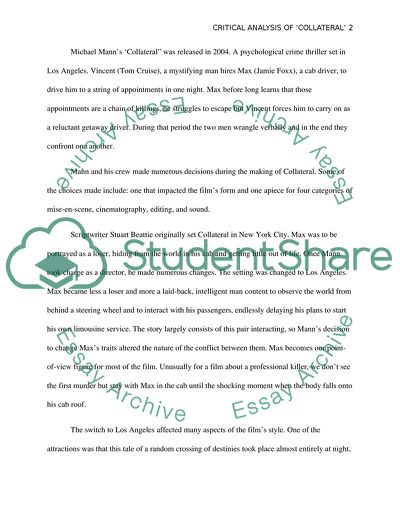Cite this document
(“Making of Collateral Essay Example | Topics and Well Written Essays - 1500 words - 36”, n.d.)
Making of Collateral Essay Example | Topics and Well Written Essays - 1500 words - 36. Retrieved from https://studentshare.org/visual-arts-film-studies/1609818-essay
Making of Collateral Essay Example | Topics and Well Written Essays - 1500 words - 36. Retrieved from https://studentshare.org/visual-arts-film-studies/1609818-essay
(Making of Collateral Essay Example | Topics and Well Written Essays - 1500 Words - 36)
Making of Collateral Essay Example | Topics and Well Written Essays - 1500 Words - 36. https://studentshare.org/visual-arts-film-studies/1609818-essay.
Making of Collateral Essay Example | Topics and Well Written Essays - 1500 Words - 36. https://studentshare.org/visual-arts-film-studies/1609818-essay.
“Making of Collateral Essay Example | Topics and Well Written Essays - 1500 Words - 36”, n.d. https://studentshare.org/visual-arts-film-studies/1609818-essay.


